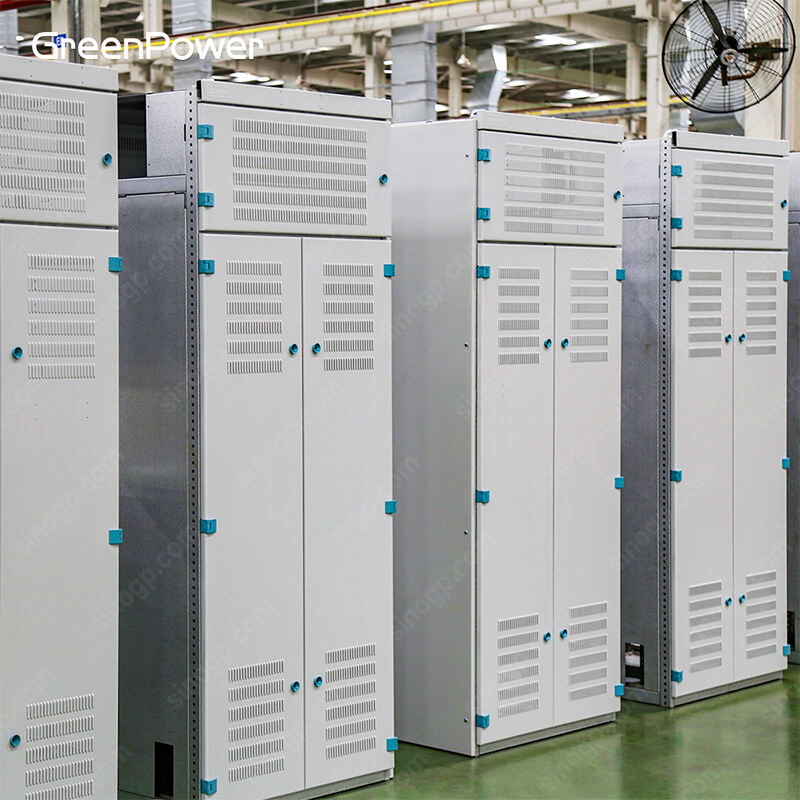All MCC switchboards, MNS switchboards, and Medium voltage switchgear are the ‘switchboards’ of the electrical distribution system. They control, protect, and distribute power to various plants, complexes, and infrastructures. Like any other equipment, switchboards do not perform optimally and eventually fail. They can fail safe, possibly resulting in costly and dangerous downtime. Risks to safety and reliability are not the only issues in neglected switchboard maintenance. GPSwitchgear, a professional electrical equipment manufacturer, has built its reputation on the importance of systematic switchboard maintenance. There are some key perspectives we can explore together to understand why maintenance is necessary and value what we have.
Switchboards can develop faults such as loose connections and insulation breakdowns and fail catastrophically. When that happens, it can trigger power outages and disrupt production workflows or commercial activities and critical services, for instance, healthcare or water treatment services. Scheduled switchboard maintenance can help avoid those major issues. Maintenance involves inspections and corrective actions, such as, tightening loose busbars—the connections can overheat and arc (create a spark). Also, dust is cleaned from insulation component (which increases insulation resistance). Maintenance helps trigger testing of protective devices to confirm that they function as designed in response to faults. For instance, in an MCC switchboard, a maintenance inspection might find a terminal that is corroded and at risk of overheating and causing a short circuit, the option is to replace it. Statistics prove that downloadable switchboard maintenance reduces unexpected outages and downtime directly increases costs. For a manufacturing plant, an hour of unplanned downtime can result in thousands of dollars. Preventive “safety net” maintenance solves it.

Due to the high initial cost of installation, switchboards demand effective maintenance to prolong the estimated useful service period of 15-20 years. Components will degrade faster without the needed maintenance, for example, the lubrication of the moving parts and the switch operating mechanisms will lead to mechanical breakdown, and moisture-attenuated insulation will cause early replacement. Maintenance still prolongs the life of the switchboards, even if to some specific maintenance objectives, like the lubrication of moving parts and the application of anti-oxidation on the terminals, and replacement of aged components such as worn gaskets and obsolete relays. For example, the copper busbars of a medium voltage switchboard receive maintenance (cleaning and bolting) every 6 months to control oxidation and guarantee a tight, low-resistance connection which increases the busbar service life by 5-8 years. Regular maintenance effectively prolongs the service life of switchboards, and thus delays the expensive replacements for large switchgear systems, which within a facility translates to improved capital expenditure and overall ROI on the electrical equipment.
All electrical safety considerations include switchboards. If switchboards are faulty, they may deliver electric shocks, cause arc flashes, or even catch fire. Switchboards that are maintained regularly ensure that safety standards are met and keep the severity of potential accidents within reasonable standards. Current leakage and potential electric shocks are avoided by testing the insulation. Ground connections are verified, and protective earth grounding is useful when fault currents are safely diverted, eliminating the risk of high and low voltage electric shocks. Flame-retardant switchboard compartments help avoid fire spread when arcing occurs. For instance, maintenance of the MNS switchboard located in a commercial building checks the fire control of the cabinet. If an arc flash takes place, they ensure it is contained within the switchboard and does not endanger the lives of nearby workers. Safety interlocks are regularly maintained to ensure that access is controlled to the live circuits and avoid high-voltage shocks. OSHA (Occupational Safety and Health Administration) estimates that electrical maintenance on a switchboard in a facility cuts down electrical incidents by 50%. Consequently, regular switchboard maintenance saves the most important asset: personnel.

Neglected switchboard parts can elevate energy inefficiency and costs. Take unmaintained busbar connections, which may result in heat build-up thanks to high electrical resistance. Energy is also wasted when circuit breaker contact issues lead to voltage drops and equipment motors overwork to compensate for lost voltage. Maintenance switchboards save energy by tightening connections to eliminate resistance, cleaning contacts to relieve voltage sink problems, and calibrating energy metering units to control power metering properly. In industrial MCC switchboards, exceptional maintenance of variable frequency drives (VFDs) is critical for efficient motor speed control and prevents wasted energy. The switchboard maintenance of such equipment saves energy and operational costs. These figures may not seem high—5-10% reduced electrical energy costs—but large facilities really benefit over the course of a year.
This is a textbook example of maintenance aligning energy accounting objectives with operational cost reduction. Regular maintenance helps shift energy accounting objectives towards operational cost reduction. Switchboard maintenance has operational cost reduction. They shift energy accounting objectives with operational cost reduction.
Ensuring regular maintenance on switchboards helps guarantee compliance with laws, rules, and regulations, and standards set forth by governing bodies such as the International Electrotechnical Commission (IEC) and the National Fire Protection Association (NFPA) and even local authorities. Standards require maintenance to make sure equipment is safely operated. NFPA 70E is an example of a standard that requires annual inspections and testing of equipment, switchboards included, to minimize the risk of an arc flash. Facilities that do not conduct regular maintenance on their switchboards are, by all means, exposing themselves to compliance risk, which may attract penalties, operational shutdowns, and possibly even criminal charges. For facilities directly subjected to regulations such as the NFPA guidelines, standards set maintenance compliance in order to grant certifications like ISO 9001. Documented comprehensive maintenance (switchboard maintenance) provides proof of compliance. This proof is maintenance records that display inspections, their test results, and components that were replaced.
 Hot News
Hot News2025-11-10
2025-11-07
2025-11-05
2025-11-04
2025-11-03
2025-10-25